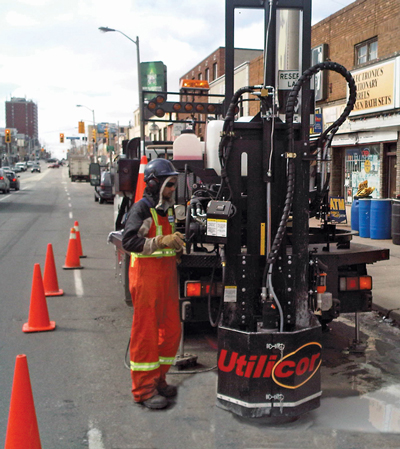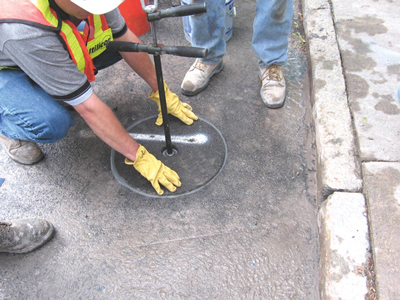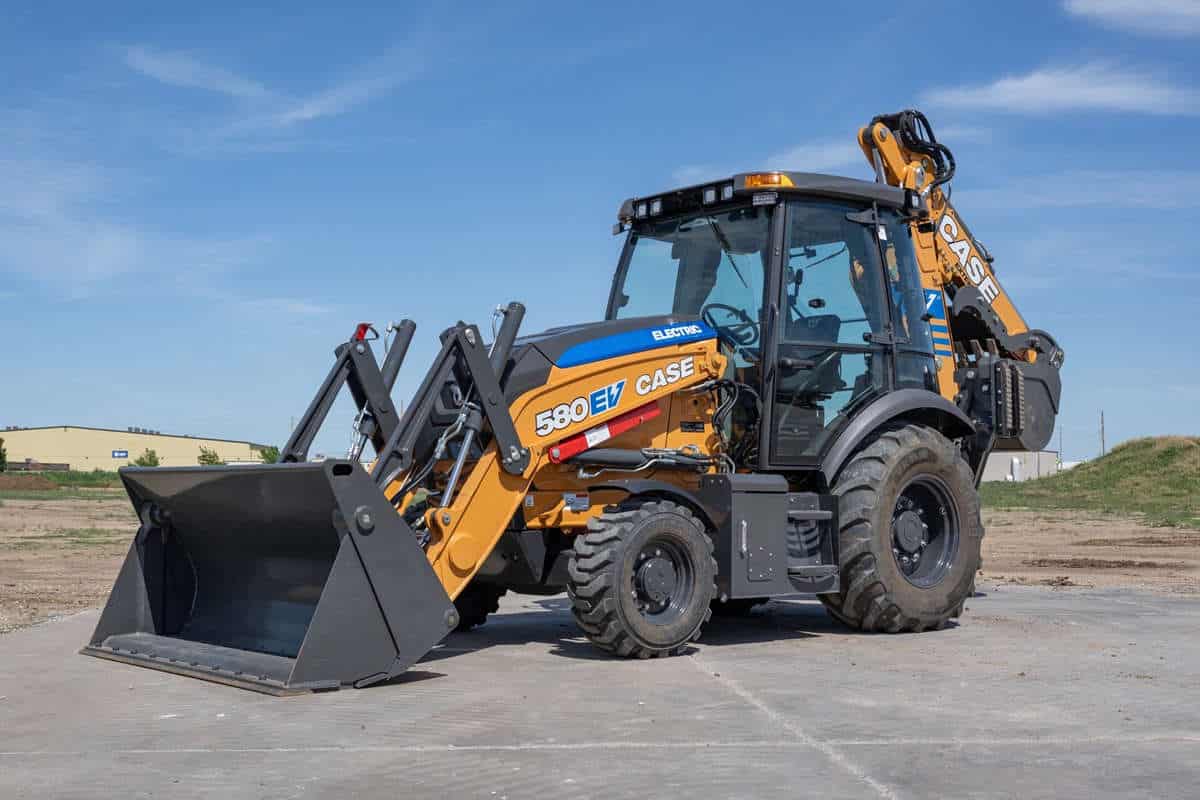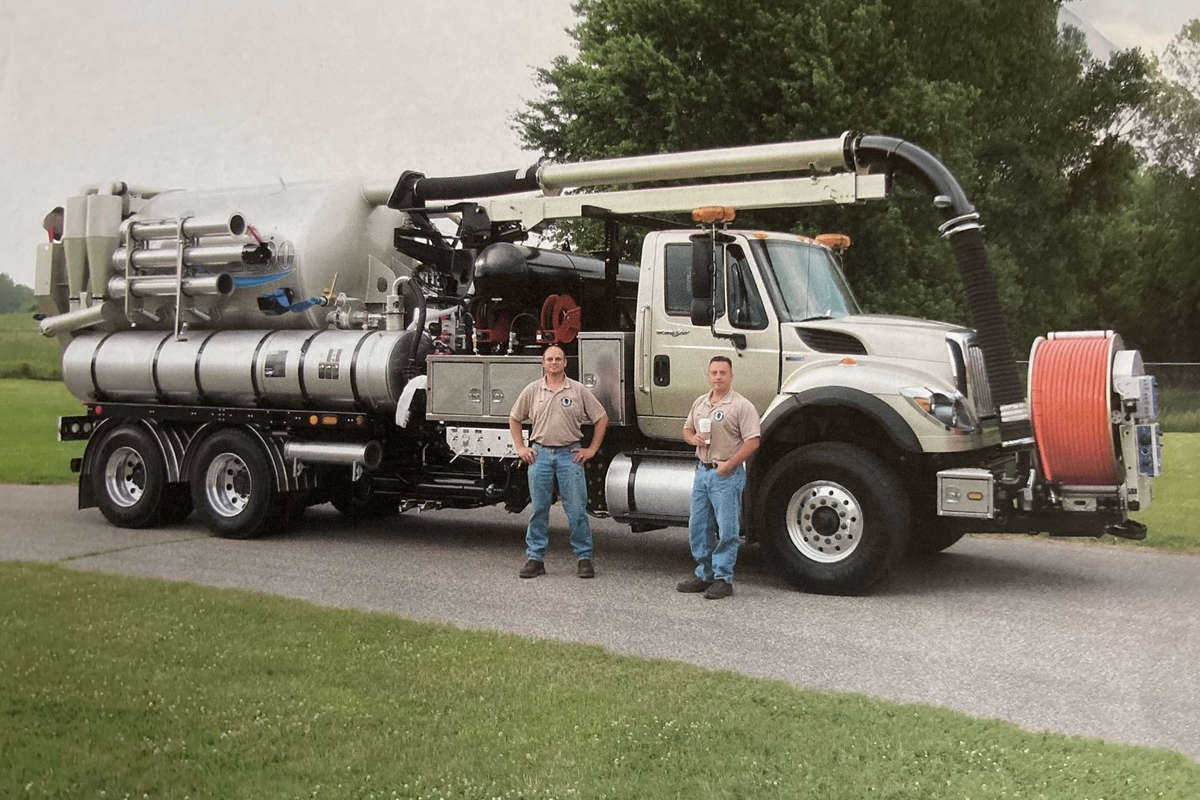Keyhole Coring Allows Vacuum Excavation Crews to Get In and Out with Minimal Disruption
 “Utility contractors are people too,” says Dan Bartels, Owner of Super Sucker Hydrovac Services, an Ancaster, Ontario-based full-service hydrovac operator. “We recognize that our work zones can sometimes disturb neighborhoods, disrupt traffic or raise environmental concerns, but we are also very conscious of these issues and are always looking for better ways of doing things.
“Utility contractors are people too,” says Dan Bartels, Owner of Super Sucker Hydrovac Services, an Ancaster, Ontario-based full-service hydrovac operator. “We recognize that our work zones can sometimes disturb neighborhoods, disrupt traffic or raise environmental concerns, but we are also very conscious of these issues and are always looking for better ways of doing things.
“One of those ways,” says Bartels, “is keyhole coring and reinstatement that cost-effectively allows us to quickly and safely core through the pavement so that we can vacuum excavate down to where the underground work will be performed.”
Some hydrovac operators contract out the pavement cutting to a subcontractor that specializes in pavement cutting, and others, like Super Sucker, choose to do that work in-house because it gives them more flexibility and control of the project and, in the long term, it is much more cost-effective. But cutting through the pavement is only part of the process.
Conventional hard surface excavation tools like concrete saws, jackhammers, pavement breakers and backhoes, while readily available at every equipment rental outfit, bring with them lots of baggage that includes peripheral damage to the roadway, sunken temporary patches, greater delay and inconvenience to the travelling public, and often results in pavement utility cuts that never properly heal. These can all become real safety hazards.
But while avoiding delay and damage to the roadway is important, how you cut through pavement is even more important.
Worker safety is a major factor. While it’s true that some workers tend to overlook or ignore safety, it is estimated that more than half of the injuries to construction workers are musculoskeletal disorders or repetitive stress injuries to the hand, wrist, arm, elbow, shoulder and back. This is a real concern for employees tasked with breaking out utility cuts using a jackhammer that may often weigh 90 lbs.
It is also a concern for their employers. For example, in British Columbia between 1996 to 2000, more than 50 percent of the accepted Workers Compensation Board claims from construction workers were for overexertion accidents involving jackhammers. The claims related to jackhammers in this time period amounted to almost $1 million and more than 5,822 lost workdays.
As a result, Super Sucker was keen to find a pavement-cutting alternative that fit better within its vision of damage prevention and risk mitigation. Keyhole coring is both easy and safe for the worker. All of the pavement cutting is done with a purpose-built, hydraulically-driven coring unit and all of the underground work is performed from the surface of the road using specially-designed, long-handled tools.
Keyhole Coring and Reinstatement
 “Today, keyhole coring and reinstatement is seen as a smarter, safer, environmentally-friendly and more cost-effective way of performing and repairing utility cuts,” says Colin Donoahue, Vice President of Field Operations of Utilicor Technologies, a leading manufacturer of keyhole coring equipment. “Because it is faster than other methods, it makes business sense to utility contractors who are always operating under time pressure from both the client, anxious to get the job done, and the municipality, anxious to reopen the road for traffic.”
“Today, keyhole coring and reinstatement is seen as a smarter, safer, environmentally-friendly and more cost-effective way of performing and repairing utility cuts,” says Colin Donoahue, Vice President of Field Operations of Utilicor Technologies, a leading manufacturer of keyhole coring equipment. “Because it is faster than other methods, it makes business sense to utility contractors who are always operating under time pressure from both the client, anxious to get the job done, and the municipality, anxious to reopen the road for traffic.”
The core of pavement, once extracted from the roadway or sidewalk, is set aside allowing vacuum excavation to expose the underground infrastructure. After the underground work has been completed and the hole is backfilled to the base of the pavement, that same core of pavement is permanently bonded back into the roadway with a specially designed, super-strong, fast setting bonding compound that will support a wheel load greater than the AASHTO Standard in less than 30 minutes.
This reinstated core is a permanent waterproof repair that is not only aesthetically pleasing because it exactly matches the existing pavement, but is one that results in a paved surface that, in just minutes, has also been restored to its original, pre-excavation, design-load carrying capacity. There are no temporary patches and no unnecessary callbacks to fix dangerous failed or sunken patches.
The reason why circular road cuts perform better than square or rectangular ones has to do with basic geometry. The rectangular shape of a conventional utility cut repair concentrates pressure from traffic in the corners of the repair. Laboratory analysis shows that this pressure can be at least four times greater in the corners than in the rest of the structure. This increased pressure can cause diagonal cracks in the corners of the repair, as well as in the abutting pavement. It is these corner cracks, and the sawing overcuts present in most conventional cuts, that are the access point for ground water that is the major cause of premature pavement failure and potholes.
But perhaps the greatest barrier to groundwater penetration is the specialized bonding compound used to reinstate the core. Not only does it completely fill the annular space around the core, but when it hydrates, it creates a mechanical, waterproof joint between the core and the remaining slab of pavement that restores load bearing and transfer capacity of the pavement system to its pre-excavation levels.
By eliminating one of the major sources of ground water penetration, and by restoring the pavement to its original load transfer capabilities, keyhole coring and reinstatement can help to extend the life of the pavement.
“We knew we were on to something the first time Utilicor came out to demonstrate the process,” says Bartels. “They cut four, 18-in. diameter cores, 10 in. deep through composite pavement, in less than an hour. This was a real eye-opener for us. In the past, we had contracted a company to saw-cut the road, but we still had to jackhammer out the openings and load and truck the spoil away. That work could take us all day and involve a huge amount of manpower and equipment, not to mention the wear and tear on the backs of our employees.
“Now, in less than an hour, we had completed four pavement cuts with four perfect cores sitting at the side of the road and were able to get down to our real work of vacuum excavation to expose the buried infrastructure.”
Seeing the potential of the coring process, Super Sucker soon found new applications. They offered electric companies the ability to simply and cleanly set new poles through 24-in. diameter cored holes through the sidewalk without having to replace the sidewalk bays.
Well ahead of the pole-setting crews, they would core through the sidewalk at the site of the new pole and vacuum out the hole. After inserting a plastic tube or sleeve into the excavated opening to prevent collapse, they temporarily secured the pavement opening with a specially designed, circular steel road plate with an expandable collar that minimizes the chance of unauthorized removal.
Once the new pole had been installed by the electric company and the old pole cut off at the level of the sidewalk, Super Sucker returned to cut a 24-in. circular core around the old pole. They then broke out and removed the pavement within the cored area and vacuumed down around the pole stub freeing it up for extraction. With the stub of the old pole gone, the hole is filled with flowable fill, and the sidewalk repair is completed by the reinstatement of the pavement core originally cut out for the new pole.
Work with other utilities involved the installation of anodes through cored openings using a simple keyhole procedure performed from the surface with long-handled tools. But once again, for the contractor, the magic is in the simplicity of the pavement restoration. Being able to put the core back into the roadway or sidewalk can save hours of road closure time and thousands of dollars in repaving costs for each repair.
But most importantly, just as the hydrovac operation is a smarter and safer way to excavate, keyhole coring and reinstatement is a smarter and safer way to get the job of hard surface excavation and repair done.
Marshall Pollock is the President and CEO of Utilicor Technologies Inc.




